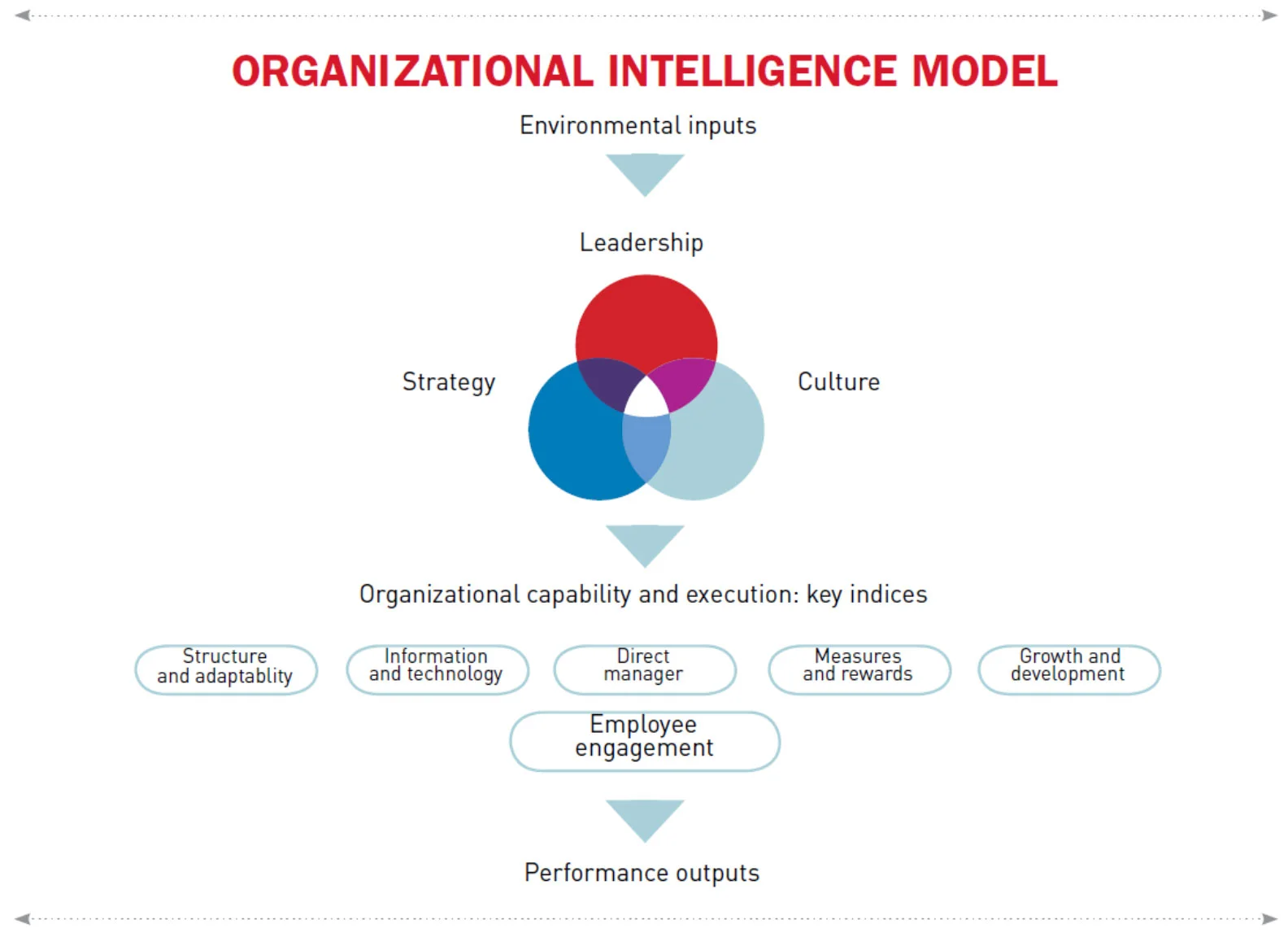Leaping Ahead With Organizational Intelligence Surveys
The organizational survey is one of the most prevalent and widely used methods
for collecting data and information about employee thoughts, feelings, and
behaviors in organizational settings. Surveys in general are commonly used for
varied purposes in the context of workplace learning, performance, and
management. Uses may include assessing training and learning needs, evaluating
programs and solutions, measuring employee perceptions and attitudes, and
conducting human capital and organizational research. But organizational
intelligence surveys are an entirely different form of survey that account for
strategic factors that enable or inhibit employee engagement, and other
important performance outcomes.
Competing definitions and confusing methods
The dot-com era from roughly 1995 to 2000, coupled with the war for talent,
ushered in the concept of employee engagement. This led to the development and
validation of a number of branded and competing definitions of engagement,
survey instruments, and concomitant items and questions by consulting firms
and research consortia and think tanks. Unfortunately, these varying
definitions and measurement tools limited the extent to which research on
employee engagement can be generalized beyond specific firms’ practices.
Moreover, many of the survey instruments available comprise merely a few items
related to employee satisfaction, motivation, commitment, and retention. They
omit important strategic and primary drivers that ultimately affect employee
engagement. Hence, the lack of a standard definition and reliable measurement
tools has left practitioners dazed and confused as to what employee engagement
actually is, and how to accurately measure it.
How do we leap ahead?
Survey consultants and practitioners are continuing to extol the value of
employee engagement. However, the means of measuring and demonstrating its
impact continues to lag behind. A comprehensive approach for measuring
employee engagement at the cognitive, affective, and behavioral levels is
sorely needed. Cognitive engagement refers to what employees think—their
rational commitment to and beliefs about the organization. Engagement, at the
affective level, refers to how employees feel about their organizations—
their emotional attachment and connection to their jobs, direct managers, co-
workers, and the organization. The behavioral domain refers to how employees
act—the discretionary energy and effort employees exert on behalf of the
organizations they serve.
Organizational intelligence surveys measure employee engagement at each of
these levels and more. They are broader than employee engagement surveys, yet
concise and more focused than traditional employee satisfaction surveys (i.e.,
those antiquated and ridiculously lengthy surveys with 100-150 items). In
general, there are three tenets that underlie organizational intelligence
surveys, making them distinct from traditional employee and organizational
surveys — they are:
Evidence-based
Organizational intelligence surveys are grounded in theory and empirical
research and are tested for validity and reliability in different settings
over time. Validity refers to the extent to which the survey items and
questions truly represent the factor or variable of interest. In other words,
they measure what they are supposed to measure. Reliability refers to the
extent to which the survey instrument consistently measures the same
characteristic or attributes over time.
Model-driven
Organizational intelligence surveys are based on a specific model or
conceptual framework surrounding how people and organizations function. Model-
driven survey efforts have been the mainstay in organization development
circles for many years. Yet many of the models used today lack predictive
utility in terms of measurement validity and reliability through which
meaningful causal assertions (i.e., predictions) can be made. The
organizational intelligence model below serves as a useful framework to
facilitate the design and interpretation of most employee and organizational
survey efforts.

The model includes 11 factors that affect employee engagement and performance.
It depicts a top-down causal chain, making some tentative predictive
assertions with respect to cause and effect. In many ways, the organizational
intelligence model can be thought of as a representation of an organization.
Focused on action planning and change
Organizational intelligence surveys focus on action planning and change. The
action planning process involves identifying important issues for the
organization to address. Through it, ideas and solutions are generated and
appropriate solutions and best approaches to implementation are selected. For
lasting change to occur, all levels of the organization—corporate, geographic
regions, business units, functions, teams, and individual line managers—must
participate in developing, implementing, and assuming ownership for continuous
improvement.
In sum, organizational intelligence surveys that are grounded in science and
that are model- driven can greatly enhance the analysis and interpretation of
the survey results, and can provide a valuable framework from which to act and
make organizational changes.






